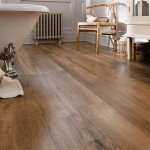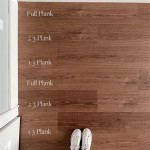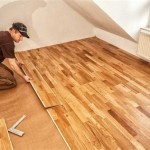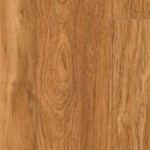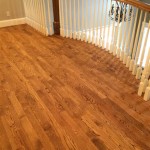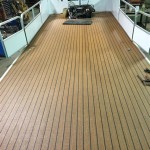Vinyl Flooring to Carpet Transition Strip: A Comprehensive Guide
Transition strips play a crucial role in interior design and functionality, particularly where different flooring materials meet. The transition from vinyl flooring to carpet requires a specific type of transition strip that addresses differences in height, provides a smooth and safe transition, and enhances the aesthetic appeal of the space. Understanding the types of transition strips available, the installation process, and the considerations involved in choosing the right strip is essential for achieving a professional and lasting result.
Transition strips, also known as transition moldings or seam binders, are designed to bridge the gap between two different flooring surfaces. They serve multiple purposes, including preventing tripping hazards, protecting the edges of the flooring materials from damage, concealing any imperfections where the materials meet, and contributing to the overall design aesthetic of the room. The specific requirements for a transition strip between vinyl flooring and carpet depend on factors such as the height difference between the two surfaces, the type of carpet and vinyl being used, and the desired aesthetic.
Understanding the Types of Transition Strips
Several types of transition strips are available for connecting vinyl flooring to carpet, each designed to accommodate specific needs and aesthetic preferences. Selecting the appropriate type is crucial for ensuring a successful installation and a visually appealing transition.
Reducer Strips: Reducer strips are primarily used when there is a slight height difference between the vinyl flooring and the carpet. These strips are sloped, gradually transitioning from the higher vinyl surface to the lower carpet. The slope minimizes the tripping hazard and creates a smooth, even transition. Reducer strips are typically made from materials such as aluminum, wood, or vinyl and are available in a variety of finishes to match or complement the flooring.
Z-Bars or Edge Grippers: Z-bars, also known as edge grippers, are specifically designed for transitions where the carpet edge needs to be secured. One side of the Z-bar is tucked under the edge of the carpet, gripping the fibers and preventing fraying. The other side rests on the vinyl flooring, creating a flush or near-flush transition. Z-bars are particularly useful in high-traffic areas where the carpet edge is susceptible to wear and tear.
T-Moldings: T-moldings are used primarily when the vinyl flooring and carpet are at the same height. The T-shaped profile of the strip bridges the gap between the two materials, creating a seamless and visually appealing transition. T-moldings are often used when the vinyl flooring and carpet are installed in adjacent rooms or areas with differing functions but a continuous floor plan. These are also available in a variety of materials and finishes to match the flooring.
Combination Strips: Some transition strips are designed to serve multiple purposes, combining features of reducer strips and Z-bars, for example. These combination strips can accommodate slight height differences while also securing the carpet edge. They offer a versatile solution for situations where the transition requirements are complex.
The material composition of the transition strip is also a critical consideration. Aluminum strips are durable and resistant to wear, making them suitable for high-traffic areas. Wood strips offer a more traditional and aesthetically pleasing look but may require sealing and maintenance to prevent moisture damage. Vinyl strips are a cost-effective option and are available in a wide range of colors and patterns, allowing for seamless integration with the flooring.
Installation Considerations and Techniques
Proper installation of the transition strip is essential for its longevity, safety, and aesthetic appeal. The installation process varies depending on the type of strip and the specific flooring materials involved. However, some general principles apply to all installations.
Preparation: Before installing the transition strip, it is crucial to prepare the subfloor and the flooring edges. The subfloor should be clean, level, and free of debris. Any existing adhesives or remnants of previous flooring should be removed. The edges of the vinyl flooring and carpet should be trimmed neatly and precisely to ensure a tight fit against the transition strip. Using a sharp utility knife or carpet cutter is recommended for achieving clean cuts.
Measuring and Cutting: Accurate measurement is critical for a successful installation. The length of the transition strip should be measured precisely to fit the gap between the vinyl flooring and carpet. Mark the cutting line on the strip using a pencil or marker. Use a saw to cut the strip to the required length. A miter saw is recommended for achieving precise angles, particularly if the transition strip needs to be installed at a corner.
Adhesive and Fasteners: Depending on the type of transition strip and the subfloor material, adhesive, fasteners, or a combination of both may be required for installation. For adhesive installation, apply a thin, even layer of construction adhesive to the subfloor using a trowel or applicator. Position the transition strip carefully and press it firmly into the adhesive. For fastener installation, use nails, screws, or staples to secure the strip to the subfloor. Ensure that the fasteners are countersunk to prevent tripping hazards. Some transition strips come with pre-drilled holes for fasteners, while others require drilling pilot holes.
Securing the Carpet Edge: When using a Z-bar or edge gripper, carefully tuck the carpet edge under the lip of the strip. Use a carpet tucking tool to ensure that the carpet fibers are securely gripped and that the edge is flush with the top of the strip. This prevents the carpet from fraying and creates a clean, finished look.
Finishing Touches: After installing the transition strip, inspect it carefully to ensure that it is securely attached and that there are no gaps or uneven surfaces. Clean any excess adhesive or debris from the surrounding flooring. If necessary, apply sealant or caulk to fill any small gaps and create a waterproof barrier. For wood transition strips, consider applying a coat of sealant or varnish to protect the wood from moisture and wear.
It's important to consult the manufacturer's instructions for specific installation guidelines, as these may vary depending on the type of transition strip and the flooring materials being used. Professional installation is recommended for complex transitions or if you are not comfortable with DIY projects.
Selecting the Right Transition Strip
Choosing the appropriate transition strip involves considering several factors, including the height difference between the flooring surfaces, the type of flooring materials, the traffic level in the area, and the desired aesthetic.
Height Difference: The height difference between the vinyl flooring and carpet is a primary consideration when selecting a transition strip. Reducer strips are designed for accommodating slight height differences, while T-moldings are suitable for surfaces at the same height. For significant height differences, custom-made transition strips or a combination of leveling compounds and reducer strips may be necessary.
Flooring Materials: The type of vinyl flooring and carpet being used also influences the choice of transition strip. For example, a thick, plush carpet may require a Z-bar with a wider lip to securely grip the fibers. A thin, low-pile carpet may be compatible with a standard reducer strip. The color and pattern of the flooring materials should also be considered when selecting the finish and material of the transition strip. Matching or complementary colors and patterns can enhance the overall aesthetic of the room.
Traffic Level: The amount of foot traffic in the area where the transition strip is installed is a critical factor in determining the durability and material of the strip. High-traffic areas require durable transition strips made from materials such as aluminum or high-density vinyl. These materials can withstand wear and tear and maintain their appearance over time. In low-traffic areas, wood or decorative vinyl strips may be suitable options.
Aesthetic Considerations: The transition strip should complement the overall design aesthetic of the room. Consider the style of the flooring, the wall colors, and the furniture when selecting the color, material, and profile of the strip. A sleek, modern design may call for a minimalist aluminum or stainless steel strip, while a traditional design may benefit from a wood or wood-look strip with a decorative profile. The transition strip should blend seamlessly with the flooring materials, creating a cohesive and visually appealing transition.
Subfloor Material: The type of subfloor also plays a role in the selection process. For concrete subfloors, adhesive and fasteners designed for concrete are required. For wood subfloors, nails, screws, or staples can be used. Ensure that the chosen transition strip is compatible with the subfloor material and that the appropriate installation methods are used.
When in doubt, consulting with a flooring professional or interior designer can provide valuable insights and guidance in selecting the right transition strip for your specific needs and preferences. They can assess the specific requirements of your project and recommend the most suitable option based on their expertise and experience.
By carefully considering these factors, homeowners can select the appropriate transition strip to ensure a safe, functional, and aesthetically pleasing transition from vinyl flooring to carpet. Proper installation and maintenance will further enhance the longevity and performance of the transition strip, contributing to the overall value and appeal of the space.

Champagne 0 31 In T X 2 W 78 7 L Vinyl 4 1 Molding

Installing Transitions From Lifeproof To Carpet No Tack Strip

How To Install A Carpet Vinyl Transition Strip On Concrete

Transition Strips For Lvt In General And High Traffic Areas Tarkett

Transitions Shawcontract

Moldings Finishings Accessories Mannington Commercial

Flooring Transition Carpet To Vinyl

Carpet To Luxury Vinyl Plank Transition With No Piece

Floor Carpet Tile Transition Strips Flooring Tools Direct

Flooring Transitions Between Rooms 50floor
Related Posts


